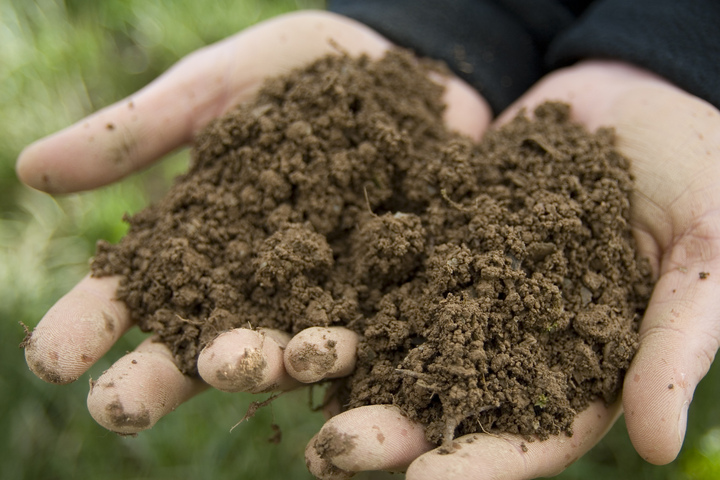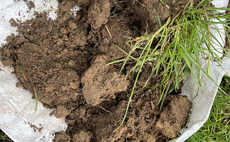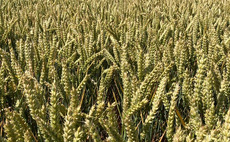
Soil health has become a focus for many farmers - and many outside the industry - over the years.
But starting out on your soil health journey may feel daunting. What are the benefits? Where do you start?
Katy Jo Stanton, from the Soil Association, gives her advice on why it is important - and even more importantly, easy ways to change your practices.
What does soil health mean and why is it important?
"The health of soil, plant, animal and man is one and indivisible," - that is what Lady Eve Balfour said when she founded the Soil Association in 1946.
Comprised of physical, chemical, and biological properties, healthy soil is often defined as having the capacity to function as a living ecosystem that sustains plants, animals, and humans. Healthy soils underpin our climate, our nature, and our health, supporting the production of 93 per cent of all the food we eat, with around 25 per cent of biodiversity living in soils.
Poor soil management can negatively impact food production and our climate. Arable soils have lost around half their organic carbon in England and Wales through intensive agriculture, with millions of hectares at risk of compaction or erosion. Greenhouse gas emissions from UK soils contribute to around a fifth of UK agricultural emissions, whilst healthy soils and effective management of them can increase our resilience to climate change by storing carbon instead.

Can improving soils improve your farm business?
Healthy soils can be more productive and reduce the need for fertilisers. They drain well and maintain stability, offering flood, drought, and compaction resilience, and reducing soil structure break down under heavy machinery or livestock activity.
Plant roots are less able to penetrate damaged or compacted soil which can impact yield, and unhealthy soils are more likely to suffer run-off through erosion, which can result in the loss of nutrients and fertiliser into habitats.
Management practices that protect soil, such as using cover crops like clover or peas, can also save costs as they provide nitrogen and other nutrients reducing the need for artificial fertilisers, and provide another crop for sale or animal feed.
Herbal leys containing a variety of deep rooting and nutrient fixing plants, are good for soil health and can provide dietary benefits for livestock too.
Soil fauna like earthworms are found in healthy soils, which support on farm biodiversity increases, including birds and predatory insects who can eat pests, reducing the need for pesticides.
Where do you start if you want to improve soils but do not know where to begin?
The first step to improving your soils is to understand them better. You can send samples to labs, but you can also carry out some simple, free tests, like those advised by the Farm Carbon Toolkit.
- Dig a hole: Look at your soil structure - healthy soil should break apart easily. Look at your plant roots and whether the soil holds water.
- Count worms: Worms are a good indicator species - if you have lots of worms, your soil will be in good biological condition.
- Slake test: Take a soil sample from 10cm below the surface. Dry it on a windowsill or airing cupboard for up to two days before removing a small, marble sized clump. Drop it in a glass of clean water. The longer it remains undissolved, the more carbon it contains. Repeat this across the farm, making note of where and when you sample. Consistency is key.
- Infiltration test: Get an amount of water and look at how long it takes for the water to infiltrate into the soil. If the water sits on the surface, this can indicate compaction.
Signs your soil needs improving
-
Weeds, disease, and pests - persistent weeds like black grass and disease can flourish in unhealthy soils, and soils lacking biodiversity are more likely to see pest infestations.
-
Run off and erosion - poorly managed soils will have reduced nutrient storage capacity, poorer soil structure, and decreased water holding capacity and soil depth.
-
Compaction - unhealthy soils are more likely to break down under the weight of heavy animals or machinery, leading to compacted, hard soils that are difficult to manage.
- Flooded or parched fields - soil that cannot retain water will flood easily during rain and be less able to sustain plants during dry weather.
Four easy ways to start improving soils
Agroecological farming practices using more nature-based solutions will benefit your soil health. Best management practices can vary by soil type, but overall diversity is key and a whole farm approach to soil health will be beneficial.
Consider:
- Decrease soil disturbance - use long rotations that reduce tillage/cultivation and reduce risk of soil compaction by avoiding machinery passes or livestock grazing on wet ground.
- Maintain soil cover - introduce cover crops and green manures and extend rotations with longer periods for herbal leys to lengthen time for soil recovery before further cultivation.
- Increase diversity - introduce a greater variety of crops with different rooting depths, try leguminous herbal leys and crops.
- Soil organic matter - measure, monitor and improve soil organic matter, increase the amount of plant and animal matter going back onto soils.
Katy Jo Stanton is an adviser within the farming team at the Soil Association charity, which provides expert guidance to any type of farmer - not just organic - on nature-friendly farming practices. Her focus area is soil health. For more advice and soil health resources, visit the farmer and grower hub of the Soil Association's website or get in touch with the charity's farming team.























